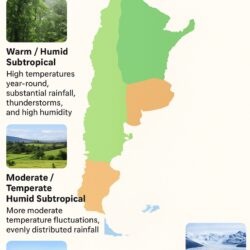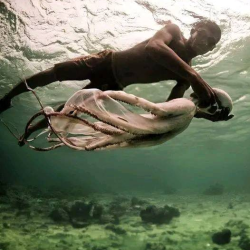The Atlantic Meridional Overturning Circulation (AMOC) is, how it works, why it matters for climate and sea levels, and whether it is slowing down.
Understanding AMOC
The Atlantic Meridional Overturning Circulation (AMOC) is a vast system of ocean currents that circulates water within the Atlantic Ocean. It acts like a conveyor belt, moving warm water northward at the surface and sending cold, dense water southward in the deep ocean.
The AMOC is part of the larger global conveyor belt (thermohaline circulation), which connects the world’s oceans and helps regulate climate, weather patterns, and marine ecosystems.
How Does the AMOC Work?
The AMOC is driven by differences in water temperature and salinity (known as thermohaline circulation):
- Warm Water Flows North
- Surface currents, like the Gulf Stream, carry warm water from the tropics toward the North Atlantic.
- Cooling and Ice Formation
- As this warm water reaches polar regions, it cools.
- Sea ice forms, leaving salt behind in the surrounding water, making it denser.
- Sinking of Cold, Salty Water
- The dense water sinks to the deep ocean, creating a southward flow beneath the surface.
- Return via Upwelling
- Eventually, the cold water rises again (upwelling) in other parts of the world, warms, and re-enters the circulation system.
This entire process is slow but powerful — it takes about 1,000 years for a single parcel of water to complete one full cycle around the conveyor belt.
Why is the AMOC Important?
The AMOC plays a critical role in maintaining Earth’s climate balance:
- Regulates Global Climate: It redistributes heat between the tropics and poles, moderating temperature extremes.
- Supports Marine Life: It circulates nutrients that sustain ecosystems and fisheries.
- Influences Weather Patterns: It helps shape rainfall belts, monsoons, and storm activity.
- Impacts Sea Levels: A slowdown can lead to higher sea levels along the U.S. East Coast.
Is the AMOC Slowing Down?
Research indicates that the AMOC has weakened over the past century. Scientists are concerned about how climate change may further disrupt it.
- Melting Ice and Freshwater Input: As Arctic and Greenland ice melt, large amounts of freshwater enter the ocean, reducing salinity and density. This makes it harder for water to sink and continue the circulation.
- Potential Consequences of a Slowing AMOC:
- Droughts in Africa: A weakening AMOC could shift rain belts southward, causing water shortages for millions.
- Sea Level Rise: The U.S. East Coast could see higher sea levels.
- Global Climate Shifts: Weather extremes, from harsher winters in Europe to disrupted monsoon systems, could intensify.
While a complete shutdown of the AMOC is uncertain, even a gradual slowdown would have major global consequences.
- The AMOC is a major ocean circulation system that moves warm water north and cold water south in the Atlantic.
- It is part of the global conveyor belt, taking ~1,000 years for a full cycle.
- The AMOC regulates climate, weather, sea levels, and ocean ecosystems.
- Evidence suggests it is weakening due to climate change, which could trigger severe climate disruptions.
AMOC is like the heartbeat of the Atlantic Ocean — slow, steady, and vital. Its stability is crucial for maintaining Earth’s climate system, and understanding its future is one of the most important challenges in climate science today.










